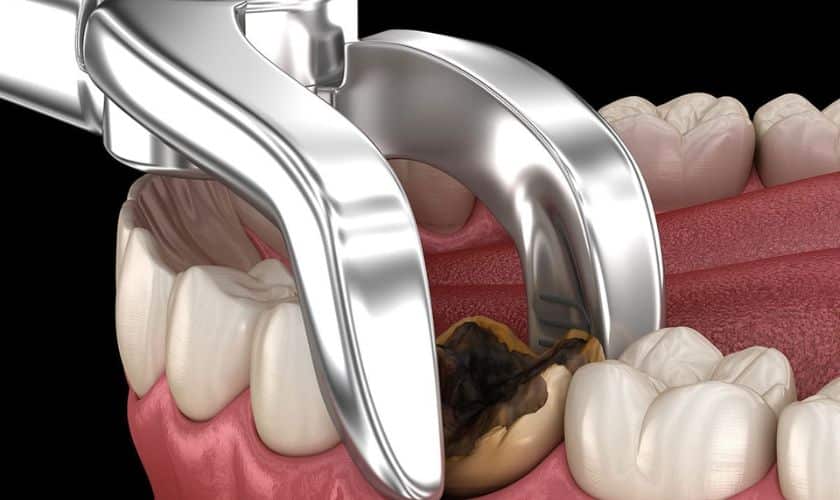Wisdom teeth extraction is a common dental procedure involving removing the third molars at the back of the mouth. This article will delve into the expert techniques and advancements in wisdom teeth extraction that have revolutionized the process, ensuring a pain-free experience and promoting optimal oral health. By mastering the art of wisdom teeth extraction, dental professionals can unleash relief and provide patients with the comfort and peace of mind they deserve. Join us on this journey as we explore the intricacies of wisdom teeth extraction and its profound impact on dental well-being.
What is Wisdom Tooth Removal?
Wisdom tooth removal refers to the surgical procedure of extracting one or more wisdom teeth, also known as third molars. These teeth are the last to erupt, typically between 17 and 25. Due to various reasons such as impaction, overcrowding, or potential oral health issues, wisdom teeth often require extraction. The procedure involves carefully removing the impacted or partially erupted tooth through a surgical process performed by a dentist or oral surgeon. It may involve local or general anesthesia to ensure patient comfort. Wisdom tooth removal is a common dental procedure to prevent complications and promote oral health.

Evaluation and Preparation
1. Dental examination: The dentist will conduct a thorough dental examination, including X-rays, to evaluate the position and condition of the wisdom teeth.
2. Consultation: The dentist will discuss the need for extraction, potential risks or complications, and address any concerns or questions the patient may have.
3. Medical history review: The dentist will review the patient’s medical history to identify any pre-existing conditions or medications that may affect the extraction process.
4. Pre-operative instructions: The patient will receive instructions regarding fasting, medication usage, and any necessary pre-operative preparations, such as arranging transportation to and from the dental office.
5. Anesthesia options: The dentist will discuss the available anesthesia options, such as local anesthesia, sedation, or general anesthesia, based on the complexity of the extraction and the patient’s comfort level.
The Extraction Process
1. Anesthesia administration: The dentist will administer the chosen anesthesia to ensure the patient’s comfort and minimize pain during the procedure.
2. Tooth extraction: The dentist will remove the wisdom tooth using specialized tools and techniques. It may involve making an incision in the gum tissue and possibly removing bone if necessary.
3. Suturing and gauze placement: After the tooth is extracted, the dentist may place sutures to close the incision and promote proper healing. Gauze pads are typically placed over the extraction site to control bleeding.
4. Post-operative instructions: The dentist will provide detailed instructions for post-operative care, including guidelines for pain management, swelling reduction, oral hygiene, and diet restrictions. It is important to follow these instructions to promote optimal healing and minimize complications.
Source: Dr. Alexander Antipov
Post-Extraction Care
1. Pain management: The dentist may prescribe pain medications or recommend over-the-counter pain relievers to manage discomfort following the extraction. It’s important to follow the prescribed dosage instructions.
2. Swelling reduction: Applying an ice pack to the affected area for the first 24 hours can help reduce swelling. Afterward, warm compresses can be used to promote healing and alleviate any residual swelling.
3. Oral hygiene: Gentle rinsing with warm salt water or an antimicrobial mouthwash can help keep the extraction site clean. However, avoiding vigorous rinsing or brushing near the extraction site is important to prevent dislodging the blood clot.
4. Diet modifications: Stick to soft and cool foods for the first few days after the extraction. Avoid chewing on the extraction site to prevent irritation or damage. Gradually reintroduce solid foods as recommended by the dentist.
5. Follow-up appointments: Attend appointments with the dentist to monitor the healing process and remove any sutures if necessary. Inform the dentist of any persistent pain, swelling, or other concerns.
Healing and Recovery
1. Initial healing: The initial healing period typically lasts a few days to a week. During this time, it’s important to rest, avoid strenuous activities, and allow the body to recover.
2. Managing swelling and bruising: Swelling and bruising around the extraction site are common after the procedure. Applying ice packs and taking prescribed medications can help reduce swelling and alleviate discomfort.
3. Oral hygiene: Gently brush your teeth, including the surrounding areas of the extraction site, after 24 hours. Avoid brushing directly on the extraction site. Rinse your mouth with warm saltwater to keep the area clean and promote healing.
4. Pain management: Take pain medications as your dentist prescribes to manage discomfort. Over-the-counter pain relievers can also be used if recommended by your dentist.
5. Follow-up care: Attend follow-up appointments as scheduled by your dentist. They will assess your healing progress and address any concerns or complications. Follow any additional instructions provided by your dentist recover from wisdom teeth removal.
In conclusion, wisdom tooth extraction is a common dental procedure to address various issues associated with wisdom teeth eruption. It is essential to undergo a thorough evaluation and follow the guidance of a dental professional. With proper evaluation, preparation, and post-operative care, wisdom tooth extraction can help alleviate pain and prevent potential complications, promoting oral health and overall well-being.
FAQs about Wisdom Tooth Extraction
1. Is wisdom tooth extraction painful?
The procedure is performed under local anesthesia, ensuring you don’t feel any pain during the extraction. However, you may experience some discomfort and swelling during the healing process, which can be managed with pain medications prescribed by your dentist.
2. How long does it take to recover from a wisdom tooth extraction?
The recovery period varies from person to person, but typically it takes about a week to fully recover. During this time, it’s important to follow post-operative care instructions provided by your dentist to promote healing and minimize complications.
3. Are there any risks or complications associated with wisdom tooth extraction?
Like any surgical procedure, there are potential risks and complications involved. These may include dry sockets, infection, nerve damage, or damage to neighboring teeth. Your dentist will discuss these risks with you and take the necessary precautions to minimize them.
4. When should I have my wisdom teeth removed?
The timing of wisdom tooth extraction varies based on individual circumstances. In some cases, early removal may be recommended to prevent potential problems, while in others, extraction may be recommended only if issues arise.
Your dentist will evaluate your specific situation and provide personalized recommendations.
5. Can I eat normally after wisdom tooth extraction?
Following a soft or liquid diet for the first few days after extraction is important to avoid irritating the surgical site. Gradually introduce solid foods as you feel comfortable, but avoid hard, chewy, or sticky foods that can dislodge blood clots and impede healing.




